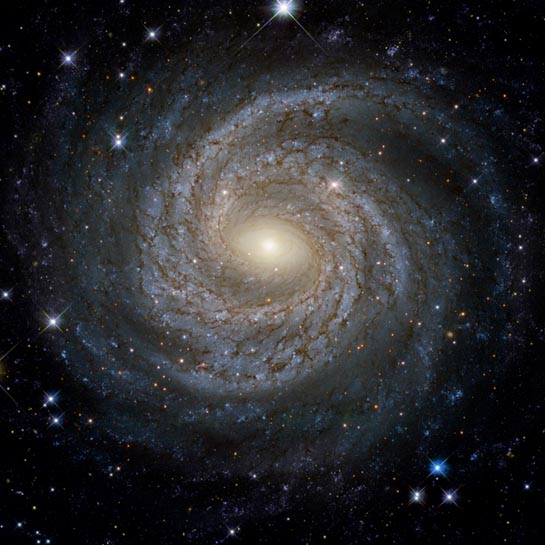
Spiral Galaxy
RA 19h 42m 40.96s Dec -10° 19' 30.75"
Aquila
75 million light years
11.2
3.2 arcmin
2.62 x 2.62 arcminutes
North is 50.8° left of vertical
ESA/Hubble & NASA
May 9, 2016
ABOUT THIS IMAGE:
Spiral galaxies together with irregular galaxies make up approximately 60% of the galaxies in the local Universe. However, despite their prevalence, each spiral galaxy is unique — like snowflakes, no two are alike. This is demonstrated by the striking face-on spiral galaxy NGC 6814, whose luminous nucleus and spectacular sweeping arms, rippled with an intricate pattern of dark dust, are captured in this NASA/ESA Hubble Space Telescope image. It was first discovered by William Herschel on August 2, 1788
NGC 6814 has an extremely bright nucleus, a telltale sign that the galaxy is a Seyfert galaxy. These galaxies have very active centers that can emit strong bursts of radiation. The luminous heart of NGC 6814 is a highly variable source of X-ray radiation, causing scientists to suspect that it hosts a supermassive black hole with a mass about 18 million times that of the Sun.
As
NGC 6814 is a very active galaxy, many regions of ionized gas are studded
along its spiral arms. In these large clouds of gas, a burst of star formation
has recently taken place, forging the brilliant blue stars that are visible
scattered throughout the galaxy.